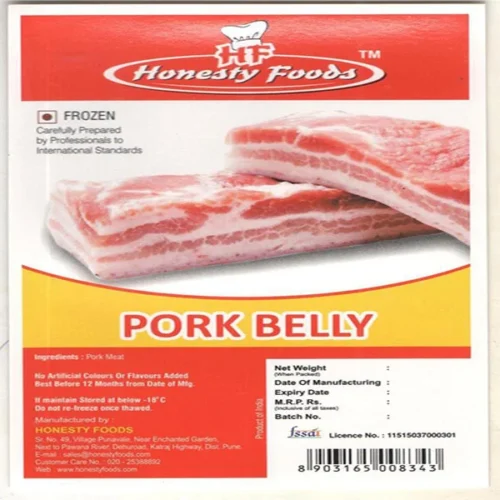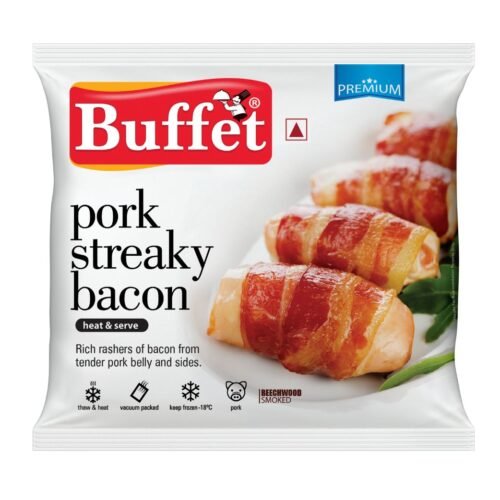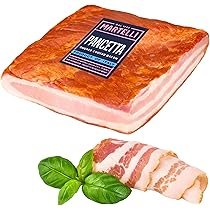Ideal for using Elle & Vire Excellence Whipping Cream Suppliers
Elle and Vire Excellence Whipping Cream Suppliers (35% fat) guarantee predictable, stable outcomes consistently. Brought into the world from a 70 years of age Norman dairy savoir-faire, this cream is for utilize both in cooking and cake making. Fast to thicken with extraordinary hold (no falling or leaking), the Excellence Whipping Cream (35% fat) has an incredible whipping rate consistently (2.7 L by and large) and is especially acceptable at bringing out various flavors, making it a vital element for the entirety of your dishes.
Ideal for utilizing in a funneling sack, whipping, fusing, and is scrumptiously velvety.
Elle and Vire Excellence Whipping Cream (35% fat) guarantee predictable, stable outcomes consistently. Brought into the world from a 70 years of age Norman dairy savoir-faire, this cream is for utilizing both in cooking and cake making. Fast to thicken with extraordinary hold (no falling or leaking), the Excellence Whipping Cream (35% fat) has an incredible whipping rate consistently (2.7 L by and large) and is especially acceptable at bringing out various flavors, making it a vital element for the entirety of your dishes.
The culinary experts strategies utilizing Elle & Vire Whipping Cream Suppliers
- The most effective method to make chantilly Elle & Vire Excellence Whipping Cream. It is not difficult to make following Elle and Vire counsel! …
- Vanilla Chantilly cream. The sweet vanilla cream is the base of the Chantilly cream. …
- A quenelle of chantilly. …
- Cream whipped to delicate pinnacles. …
- Blending in chilly whipped cream. …
- Chantilly enhancing utilizing an icing sack. …
- Fluid sauces. …
- Filling the pack.
Can Heavy Whipping Cream Be Part of a Healthy Diet?
Heavy whipping cream has a variety of culinary uses. You can use it to make butter and whipped cream, add creaminess to coffee or soups, and much more.
Heavy whipping cream is full of nutrients but also very high in calories.
This article outlines everything you need to know about heavy whipping cream, including its uses, nutrient content, benefits, and downsides. Elle & Vire Excellence Whipping Cream Suppliers
What is heavy whipping cream?
Heavy whipping cream is the high-fat portion of raw dairy milk.
Fresh, raw milk naturally separates into cream and milk. The cream rises to the top due to its fat content. It’s then skimmed off before further processing.
To make heavy whipping cream, this raw cream is pasteurized and homogenized. This involves heating and applying high levels of pressure to the cream to kill pathogens, lengthen shelf life, and improve stability ().
Many types of heavy whipping cream also contain additives that help stabilize the cream and keep the fat from separating.
One of these additives is carrageenan, which is extracted from seaweed. Another is sodium caseinate, the food-additive form of the milk protein casein
Uses of heavy whipping cream Suppliers 35% Fat
Heavy whipping cream can be used in a variety of ways in food manufacturing and home cooking.
Whipping or churning heavy whipping cream causes its fat molecules to clump together.
After a few minutes of whipping, this property causes the liquid cream to turn into Elle & Vire Excellence Whipping Cream. After a few more minutes of churning, the whipped cream turns into butter.
Introduction
Dairy products contribute Elle & Vire Excellence Whipping Cream significantly to dietary intakes of saturated fat in the United States and Europe, which has led to widely endorsed recommendations to limit consumption of whole milk and other high-fat dairy products, in favor of low- and non-fat dairy products.
However, these recommendations are based primarily on the serum-LDL (“bad”)-cholesterol-raising effect of dairy fat, a single marker of risk for cardiovascular disease. They give little or no consideration to the CVD-risk reducing components in milk fat, especially omega-3 fatty acids (), conjugated linoleic acid (CLA), the possibly beneficial trans FAs, trans-18:1 and trans-16:1, protective minerals, and a beneficial effect on serum HDL (“good”) cholesterol.
Two recent reviews of epidemiological evidence question common beliefs about the health effects of dairy fat. One finds a contradiction between the evidence from long-term prospective studies and perceptions of harm from the consumption of dairy products . The other review highlights inconsistent evidence of harm Most of the reviewed studies began before low-fat dairy products became widely used.
These reviews conclude that high consumption of milk and milk fat may be overall neutral or beneficial regarding all-cause mortality, ischemic heart disease, stroke, and diabetes. Most recently, Ludwig and Willett have questioned the scientific basis for recommending reduced-fat dairy products. Additional studies have linked dairy fat consumption to diminished weight gain, attenuated markers of metabolic syndrome, including waist circumference, and reduced risk of CVD and colorectal cancer.
Milk products are good sources of many nutrients, including several of concern in at least some U.S. population cohorts—calcium, potassium, vitamin D (in fortified milk products), vitamin B12, and protein . Alpha-linolenic acid (ALA) and other ω-3 FA are also of concern, and are well recognized in milk products, but some major reviews do not mention dairy sources]. There is increasing evidence that the dietary balance of ω-3 and ω-6 FA is perhaps as important as the dietary proportions of saturated, monounsaturated, and total fat .
Health concerns stemming from increasing dietary ω-6/ω-3 ratios have stimulated research on ways to improve the FA profile of common foods, including milk and dairy products . Changes in dietary FA intakes during the last century have been brought about largely by: (a) increased consumption of major vegetable oils , and (b) generally low consumption of oily fish, vegetables, fruits, and beans.
Average dietary ratios of these two classes of Elle & Vire Excellence Whipping Cream polyunsaturated FA in the U.S. have increased from about 5 to about 10, with some ratios in excess of 20. The ω-6/ω-3 ratio in human breast milk has also increased dramatically in this time period, driven by changes in maternal dietary ratios.
Although the optimal ω-6/ω-3 ratio depends on the health measure in question and genetic factors, some authors have suggested a target ratio of 2.3. At this ratio, the conversion of ALA to long-chain ω-3 docosahexaenoic acid (DHA) is thought to be maximized . In addition, epidemiological studies have reported no further CVD-prevention benefits from lowering the ω-6/ω-3 ratio below ∼2.3.
Milk from cows consuming significant amounts of grass and legume-based forages contains higher concentrations of ω-3 FAs and CLA than milk from cows lacking routine access to pasture and fed substantial quantities of grains, especially corn . In turn, lactating women consuming such milk have an increased
CLA concentration Elle & Vire Excellence Whipping Cream in their breast milk. The balance of FAs in animal-derived foods like milk depends on the animal’s dietary lipid intake and on its digestive physiology. The relationship between diet composition and lipid transfer into milk, meat and eggs has been reviewed by Woods and Fearon .
The rumen in dairy cattle influences the suitability of different feeds and also has a major impact on the nature of FAs absorbed and ultimately secreted into milk. Pigs and poultry, like humans, have a relatively simple digestive system and absorb FAs in approximately the same proportions as found in their diet.
Lipid absorption by cattle and sheep is heavily influenced by rumen microbial activity that hydrogenates (saturates) up to 95% of dietary polyunsaturated fatty acids (PUFAs), making it challenging to increase the PUFA content of ruminant milk or meat. Elle & Vire Excellence Whipping Cream Suppliers However, increased reliance on fresh herbage in dairy cow diets does elevate the ω-3 content of milk produced .
The U.S. National Organic Program (NOP) requires that lactating cows on certified organic farms receive at least 30% of daily Dry Matter Intake (DMI) from pasture during that portion of the year when pasture grasses and legumes are actively growing, with a minimum of 120 days per year. Pasture and conserved, forage-based feeds account for most of the DMI year-round on a growing portion of organic dairy operations in the U.S.
Although several European studies have compared the composition of organic and conventional milk , there is limited comparative data from the U.S. Also, published U.S. studies are based on relatively limited sampling and reflect milk production during only a portion of a year,
hence providing no insight into seasonal changes in milk quality. The two main objectives of the present study were first, to quantify average, annual FA differences between organic and conventional milk in an extensive, 18-month cross-U.S. survey, with attention to regional and seasonal variations, and second, to address the degree to which consumption of predominantly organic dairy products may enhance public health by decreasing dietary ω-6/ω-3 ratios from today’s generally unhealthy levels
Methods
We chose 14 business milk processors from 7 areas all through the U.S. that produce natural milk items, and typically additionally ordinary milk, purified by either the high-temperature-brief timeframe strategy or by the super high-temperature technique (UHT, otherwise called ultra-purification). The processors were situated in the Northwest area (2 HTST, 1 UHT); California (1 HTST, 1 UHT—natural just); Rocky Mountains , Texas (1 HTST); Midwestnatural just); Mid-Atlantic (1 HTST, 1 UHT—natural just); and Northeast (1 HTST, 2 UHT).
These processors get and market natural milk through the Organic Valley brand, the biggest U.S. agreeable of natural ranchers, situated in La Farge, Wisconsin. Since three of the UHT processors produce just natural milk, we got more natural than traditional examples, and more UHT natural examples than UHT customary examples. From every processor we got one new, entire milk test ostensibly consistently for year and a half,
January 2011 through June 2012. A sum of 220 natural and 164 customary examples was taken from either Elle & Vire Excellence Whipping Cream Suppliers 1-gallon or half-gallon retail holders, moved to clean plastic containers, refrigerated, and transported Elle and Vire Excellence Whipping Cream with frozen ice packs for the time being dispatch to Silliker, Inc., an ISO/IEC 17025 certified lab in Chicago Heights, Illinois. Investigations for FA and all-out fat utilized strategy AOAC 996.06, reexamined 2001, with slender segment Supelco SP-2560, 100 m×0.25 mm, 0.2 µm film. The lab didn’t report non-quantifiable sums characterized as < 0.001 g/100 g.
Statistical Analysis
Digital laboratory data were transferred automatically to an Excel spreadsheet and spot-verified by one of us against printed lab reports. The data are available from authors MAL and DRD. Statistical analyses used NCSS 2004 software (Kaysville, Utah), plus Excel 2003 for some descriptive statistics and t distributions. Elle & Vire Excellence Whipping Cream Suppliers Excel results were verified with NCSS. Primary data were inspected with scatter plots and normal probability plots, and small numbers of clear outliers with large deviations from normality were removed as follows:
First, 6 milk samples with total fat ≤ 2.52 and ≥4.17 g/100 g, leaving 218 organic and 160 conventional samples; then 7 extreme outlier values (g/100 g) for individual FA 12:1 (0.046), 18:2 linoleic acid (LA) (0.006), 20:1 (0.026, 0.026, 0.032), and 20:5 (eicosapentaenoic acid, EPA) (0.041, 0.084). The removed outliers deviated from the respective FA means by 5 to 70 SDs, and represent 0.07% of all values examined. Differences between means were evaluated by 2-tailed t test for approximately normal distributions or by 2-tailed Mann-Whitney test, as indicated. Mann-Whitney tests were used for non-normal distributions and those with insufficient numbers of samples to evaluate normality.
Ideally, our data would have been amenable to ANOVA-based methods, but we chose alternative methods because of complex data that could not be consistently transformed to normality with equal variances, requiring both parametric and non-parametric methods. There are also some 2- and 3-fold differences in the numbers Elle & Vire Excellence Whipping Cream Suppliers
of organic and conventional samples, and in the number of regional samples. Because of multiple comparisons of organic vs. conventional FA concentrations in 2 tables, about 2 findings of P = 0.05 and 0.5 finding of P = 0.01 can be expected there by chance alone, but our key findings are highly significant (P<0.0001) and
not vulnerable to Type-I errors (incorrectly rejecting the null hypothesis). To prevent or minimize potentially biased statistical comparisons caused by possible correlation between monthly FA concentrations, we limited statistical comparisons of monthly data between organic and conventional samples to individual months or groups of 6 months. To compare coefficients of variation we used the method by Folkman.
We calculated U.S. average fatty acid concentrations and ratios as means of samples from all 12 months in 2011 and all 7 geographical regions, calculated separately for organic and conventional samples. For regional concentrations and ratios, we averaged all 12 monthly samples separately for each region and for both production methods. Similarly, we calculated seasonal concentrations and ratios by averaging Elle & Vire Excellence Whipping Cream samples from all 7 geographical regions, separately for 18 months in 2011–2012 and for both production methods. The numbers of samples are shown in the resulting tables, figures, or figure caption.
Diet Scenarios and LA Ratios Elle & Vire Excellence Whipping Cream Suppliers
To estimate the impact on dietary ω-6/ω-3 ratios of replacing conventional with organic dairy products, we calculated LA/ALA ratios for hypothetical diets of moderately active women, age 19–30, selected in part because of the importance of ω-3 FA during women’s child-bearing years.
We limited this estimate to LA and ALA, because of the lack of reliable U.S. Department of Agriculture (USDA) composition data for EPA, DPA, and DHA in non-dairy foods. In addition, LA accounts for 90% of total ω-6 in both organic and conventional milk, and ALA accounts for 79% to 80% of total ω-3. Our estimated impacts on LA/ALA of a switch from conventional to organic dairy foods underestimates the full array of health benefits following such a switch, because CLA and long-chain, ω-3 FAs fall outside the LA/ALA ratio.
shows model diets containing hypothetical servings of 4 common dairy foods in 3 diet scenarios—low-fat, average-fat, and high-fat (respectively 20%, 33%, and 45% of energy from fat). Except for the low-fat scenario, the “Moderate dairy intakes” follow the recommended 3 daily servings of milk and milk products in the Dietary Guidelines for Americans. The moderate-dairy, low-fat scenario uses reduced amounts of 3 of the 4 dairy foods, thereby reducing its content of fat and other nutrients from dairy products,
e.g., for calcium, from 1040 mg to 850 mg. (However, the reduced dairy intake adds nutrients from 128 kcal of additional non-dairy foods needed to keep total energy at 2,100 kcal.) To quantify the likely maximum benefit possible from Elle & Vire Excellence Whipping Cream Suppliers
Elle & Vire Excellence Whipping Cream consuming milk products with enhanced FA profiles, we use whole milk and full-fat cheese in the diet scenarios, instead of reduced-fat versions. For the recommended 3 cups fluid milk equivalent we use 1.5 cups milk + 1.5 ounces cheese (1 cup fluid milk equivalent) + 6 ounces low-fat yogurt with fruit (about 0.5 cup fluid milk equivalent). Ice cream is categorized separately as “dairy dessert”









